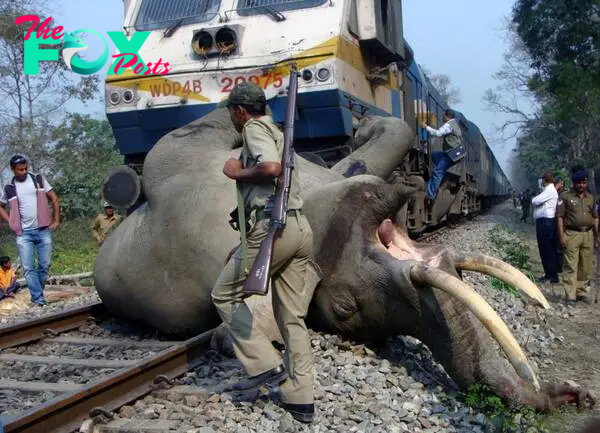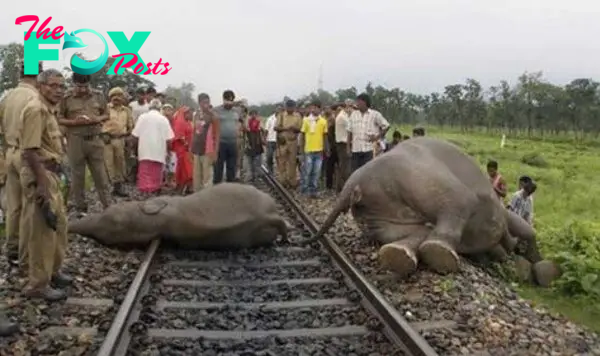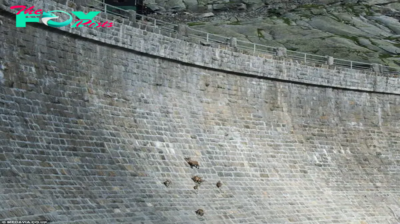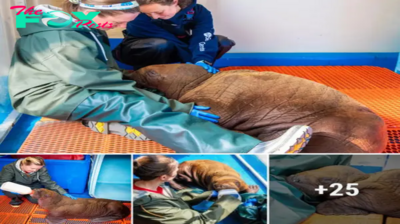Animals
SVL. Unite for Life: Let’s Save Elephants Stuck on Railways.
Introduction: In the serene landscapes of many countries, elephants roam freely, embodying the spirit of wilderness and majesty. However, the encroachment of human infrastructure poses a grave threat to their existence. One such perilous situation arises when elephants get trapped on railway tracks, facing imminent danger. In response to such emergencies, communities and organizations unite in a collective effort to rescue these magnificent creatures. This article rallies individuals to join hands in saving elephants stuck on the railway from 6 pm till late.
Understanding the Situation: Elephants are known to traverse vast territories in search of food, water, and mates. Unfortunately, this often brings them into coNFLict with human settlements and infrastructure, including railways. When elephants become trapped on railway tracks, the consequences can be devastating. Not only are the elephants themselves at risk of injury or death, but the situation also poses a danger to train passengers and railway personnel.

Challenges Faced: Rescuing elephants from railway tracks presents numerous challenges. The sheer size and strength of these Animals make it difficult to move them safely. Moreover, the presence of a distressed elephant can agitate others in the herd, leading to further complications. Additionally, the logistics of organizing a rescue operation, especially during nighttime, add to the complexity of the task.
The Importance of Timely Action: Time is of the essence when elephants are trapped on railway tracks. As dusk turns into darkness, visibility decreases, increasing the risk of accidents. Furthermore, prolonged exposure to stress and danger can exacerbate the elephants’ distress and compromise their well-being. Hence, it is imperative to mobilize quickly and efficiently to ensure the safe rescue of these majestic creatures.
Community Engagement: The rescue of elephants trapped on railway tracks requires the concerted efforts of various stakeholders, including local communities, wildlife experts, and government agencies. Community engagement plays a crucial role in raising awareness about the issue and garnering support for rescue initiatives. By involving residents living in proximity to elephant habitats, we can foster a sense of responsibility and solidarity towards wildlife conservation.
Volunteer Recruitment: Volunteers form the bacKBOne of any successful rescue operation. Whether it’s providing logistical support, assisting wildlife experts, or managing crowd control, volunteers play a pivotal role in ensuring the smooth execution of rescue efforts. Moreover, volunteering for such noble causes fosters a sense of fulfillment and purpose among individuals, strengthening the bond between humans and nature.

Training and Preparation: Effective rescue operations require meticulous planning and preparation. Wildlife experts and volunteers undergo specialized training to handle various aspects of the rescue process, including tranquilizing elephants, securing the area, and transporting the Animals to safety. By equipping volunteers with the necessary skills and knowledge, we empower them to contribute meaningfully to the rescue mission.
Conclusion: The plight of elephants trapped on railway tracks underscores the urgent need for collective action and compassion towards wildlife. By joining hands and pooling our resources, we can make a tangible difference in the lives of these magnificent creatures. Let us heed the call to rescue elephants stuck on the railway from 6 pm till late, embodying the spirit of solidarity and stewardship towards our natural heritage. Together, we can create a safer and more harmonious coexistence between humans and elephants.
-

 Animals7m ago
Animals7m agoA 40-day arduous journey! Heavy pregnant dog аbаndoned in the snow, gave birth to 15 beautiful puppies
-

 Animals7m ago
Animals7m agoShe was Born With Five Legs And Two Tails, Was Discriminated Against All her Life For It And Lived On The Streets Unloved
-

 Animals2h ago
Animals2h agoLamz.New Hope in the Wild: Two Endangered Jaguar Cubs Born in ‘El Ocotal,’ Edomex, Sparking Conservation Efforts
-

 Animals4h ago
Animals4h agoMS “Egypt’s ‘Walking Whales’: Desert Fossils Reveal Ancient Sea Mammals Dominating Oceans 37 Million Years Ago” MS
-

 Animals4h ago
Animals4h agoMS “Brave Goats Scale Near-Vertical Barrier at Italian Lake to Access Mineral-Rich Stones” MS
-

 Animals6h ago
Animals6h agoThe baby walrus, weighing 200 pounds, joyfully embraced and thanked its rescuer
-

 Animals6h ago
Animals6h agoThe swan always necks the person who saved it as a sign of аffeсtіoп.
-

 Animals7h ago
Animals7h agoHe Was Sad, Scared After Long Days of Unhappiness



















